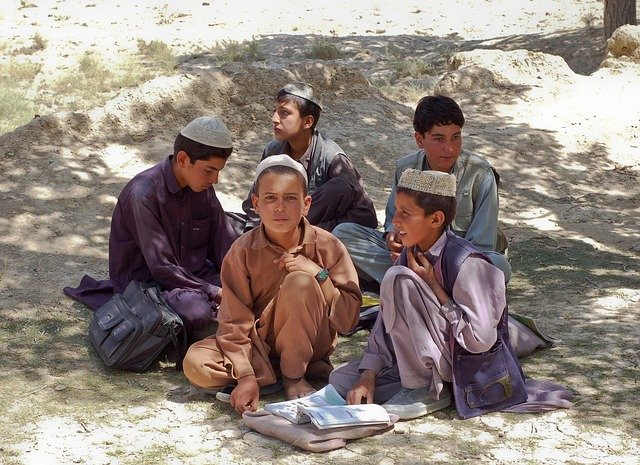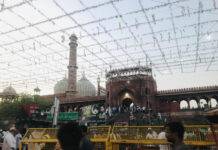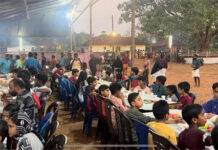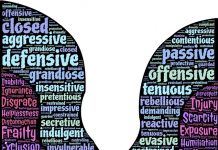
Education is one of the most important instruments for the development and empowerment of any marginalized community. Education plays an important role in helping people in gaining a respectful and dignified life within the society and is also helpful for enabling people to find a source of employment and livelihood. Sir Syed Ahmad Khan was a great socio-religious reformer and messiah of ‘Muslims education’ and he said, “It is the categorical verdict of all the nations and great seers of the world that national progress depends on education and training of the people. Keep in mind that life without education and training is like a bird without wings.”
Muslims are the second largest populous religious group after Hindus in the country. The National Minority Commission has identified Muslims as minorities along with Christians, Sikhs, Buddhists and Jains on the basis of religion. Among the minorities, Muslims have the highest population with 14.2 percent, followed by Christianity 1.7 percent, Sikhism 0.7 percent, Buddhism 0.5 percent, Jainism 0.4 percent and others at 0.7 percent. There are many states such as Jammu and Kashmir, West Bengal, Assam, and others in which population of Muslims is above 20% (Censes, 2011).
Muslims, despite being the largest religious minority of the country are lagging behind as compared to the other religious minorities on all indicators of human development, such as living standards, financial stability, political existence, education and other aspects, thereby showing poor performance in most fields. Their socio-economic status is far behind that of other minorities and is also less than the national level.
The factors of their educational backwardness have not fully and satisfactorily been studied by scholars and other governmental and non-governmental agencies. Invariably most individual researchers, organizational surveys and government appointed committees find that Muslims are the most educationally backward community of the country.
In this regard, a high level committee was headed by the Prime Minister of India in 2006, popularly called the Sachar Committee. The Committee found that Muslims have low level access to educational opportunities and their educational quality is even lower or is as bad as the Scheduled Castes (SCs) and Scheduled Tribes (STs) and Other Backward Classes (OBCs). The report has also revealed that one fourth of Muslim children in the age group of 6-14 years have either never attended school or are dropouts. For children above the age of 17 years, the educational attainment of Muslims at matriculation is 17%, as against national average at 26%. Only 50% of Muslims who complete middle schools are likely to complete secondary education, compared to 62% at the national level’ (Ministry of Education, GOI). Their literacy rate, mean year of education, representation in senior secondary education and higher education is below other communities in India. For example, the literacy rate among Muslims is 57.3%, which is far behind the national average of 74.4%. When we see other minority communities in India their literacy levels are far better than the Muslims. The majority Hindus have a literacy rate of 63.6%. Literacy among other minority such as Jains is 86.4%, Among Christians it is 74.3%, Among Buddhists it is 71.8% and among Sikhsit is 67.5% in India. This shows that the Muslims have the highest illiteracy rate of any single religious community in India. Although the literacy rate for Muslim women was higher than SCs and STs women, but lower than others (Times of India, 2020).
A study was conducted by S.M.I.A. Zaidi in 2006 and found that the highest literacy among Muslims was in Andaman and Nicobar Islands at 89.8%, followed by Kerala 89.4%, while lowest literacy was found in Haryana 40%, and Bihar 42%. In the major states of the country (i.e. Uttar Pradesh, West Bengal, Bihar, and Haryana etc.) Muslims are educationally the most backward in comparison with other religious communities.
As per National Sample Survey Report of the 75th Round (2018), reported by the Times of India (2020) the Gross Attendance Ratio (GAR) of Muslims was lower (i.e., 100) than SCs (101), STs (102), OBCs, and minorities. The same case is also at upper primary level; here the GAR was lower than other communities. The GAR of Muslims at Secondary level was 71.9%, which was less than STs 79.8%, SCs 85.8% and from OBCs also. Similarly, in the case of higher secondary level and the GAR of Muslims was lowest i.e. 48.3%, below the SCs 52.8%, STs 60% and lowest compared to other communities as well. At the level higher secondary and above, their GAR has been 14.5%, just above the STs 14.4%, but below from the SCs 17.8% and other communities. In the age group of 3 to 35 years, among all communities, Muslims have the highest proportion that had never enrolled in formal educational institutions or programmes.
The enrolment of Muslims in higher education is pathological. As per All India Survey on Higher Education Reports (AISHE) (conducted by MHRD, GOI), it was revealed that the representation of the community in higher education was also the lowest compared to the communities such as SCs, STs and OBCs. The evidence of the survey data is depicted in the following table-
| Years | Muslim (%) | STs (%) | SCs (%) | OBCs (%) |
| 2010-11 | 3.8 | 4.4 | 11.1 | 27.6 |
| 2011-12 | 3.9 | 4.5 | 12.2 | 30.1 |
| 2012-13 | 4.2 | 4.4 | 12.8 | 31.2 |
| 2013-14 | 4.3 | 4.6 | 13.1 | 32.4 |
| 2014-15 | 4.5 | 4.8 | 13.4 | 32.8 |
| 2015-16 | 4.7 | 4.9 | 13.9 | 33.75 |
| 2016-17 | 4.9 | 5.1 | 14.2 | 34.4 |
| 2017-18 | 5.0 | 5.2 | 14.4 | 35.0 |
| 2018-19 | 5.2 | 5.5 | 14.9 | 36.3 |
Source: AISHE Reports
From the above table, the growth rate of Muslims in higher education from the years 2010-11 to 2018-19 was 26.92%, while that of the STs was 20%, and that of the SCs was recorded at 25.50 %, and OBCs 23.96%. This clearly shows that, among all the minorities, Muslims have the highest growth rate, but in terms of proportion their enrolment is the lowest among these communities.
The importance of education and skill in the rise and fall of the communities is well known, and everyone also knows that in the present scenario (which is known as knowledge society) it is impossible to spend a self-dependent and dignified life without an education.
From the above discussion and evidences, and various reports, it shows that, in the matter of education, the condition of Muslims at all levels (i.e. primary, upper primary, secondary, senior secondary and higher education) of education remains pathetic in comparison with other religious group as well as among SCs, STs and OBCs group. It is a serious constraint in planning for the education of Muslims. A large population of Muslims is not only poor, but also deprived of the legacy of education. It is very difficult to get education for those Muslims who earn their livelihood through hard work and small businesses. There are only two ways for these poor and hard working class of Muslims to get education, either government schools and colleges or madarsas.
For this reason, in my opinion, there is an urgent need for intellectuals and philanthropists to come together, generate awareness about the importance of education and make them aware of the educational schemes, policies and programmes run by the government of India. Looking at the pathetic state of education among the muslims in India, state governments along with the Centre, need to pay special attention towards the education of Indian Muslims.
Abdullah is a Research Scholar at the Department of Sociology,Aligarh Muslim University, Aligarh.













